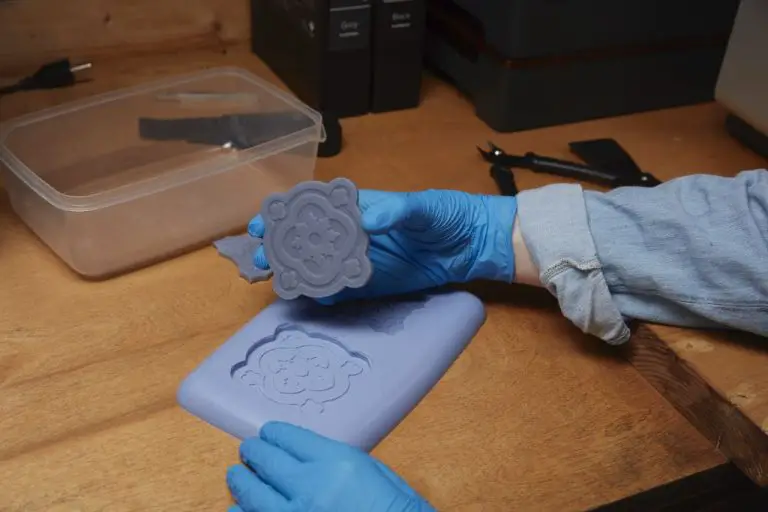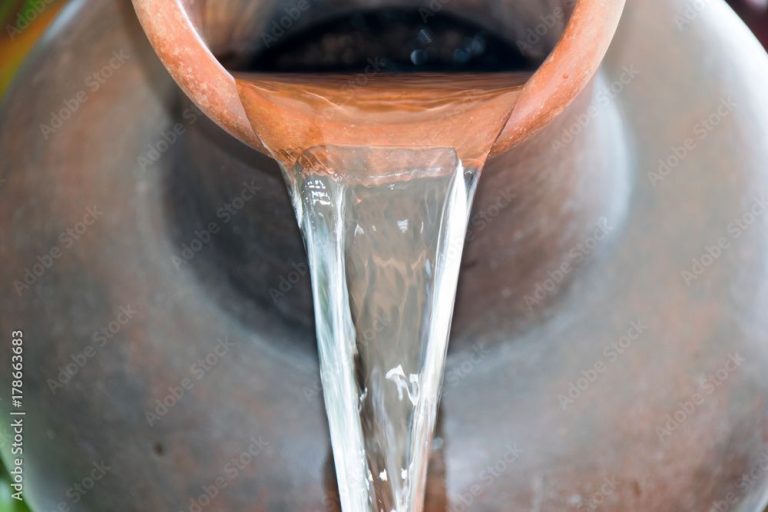Can You Use Sculpey Premo And Souffle Together?
Sculpey Premo and Sculpey Souffle are two popular brands and types of polymer clay. Polymer clay is a modeling and sculpting material that can be shaped and then hardened in a home oven. It is popular for making jewelry, figurines, dolls, and other decorative items.
Sculpey Premo is a high-quality polymer clay that is versatile and easy to condition and shape. It has a smooth, consistent texture and holds fine detail well. Sculpey Souffle is an ultra lightweight polymer clay that has a fluffy, porous texture. It is ideal for making lightweight beads, jewelry components and adding texture.
Artists may want to mix Sculpey Premo and Souffle together to combine the benefits of both clays. For example, adding some Souffle to Premo can create lightweight pieces with more body and durability than Souffle alone. Mixing the two clays can also create interesting colors, textures and effects that may be difficult to achieve with just one type of clay.
Differences Between Sculpey Premo and Souffle
Premo and Souffle are both polymer clays made by Sculpey, but they have some key differences in their properties and handling:
Premo is a firmer clay that holds fine detail very well. It requires more conditioning out of the package before it becomes pliable enough to sculpt with. According to The Blue Bottle Tree, Premo can only be stretched slightly before breaking https://thebluebottletree.com/sculpey-souffle-introduction/.
In contrast, Souffle is a much softer, lightweight clay straight from the package. It is flexible and can stretch significantly without breaking. However, because it is so soft, Souffle may not hold fine details as crisply. The Blue Bottle Tree notes that Souffle can droop if sculpted too thin https://thebluebottletree.com/sculpey-souffle-introduction/.
In summary, Premo offers rigidity and fine detail, while Souffle provides softness and flexibility. Knowing the differences allows you to select the right clay for your sculpting needs.
Can You Mix Premo and Souffle Together?
Yes, you can mix Sculpey Premo and Sculpey Souffle together, but the results can vary depending on the ratio used.
According to https://thebluebottletree.com/can-you-mix-polymer-clay-brands/, all polymer clay brands can be mixed together. However, to retain the properties of Premo, it’s recommended to limit Souffle to 20% or less of the mix.
When mixing the two clays, it’s important to condition them thoroughly to evenly distribute the Souffle throughout the Premo. Kneading the clays together well will create a uniform material.
Both Premo and Souffle have slightly different characteristics, so mixing small amounts will balance the properties. Using too much Souffle can make the clay sticky. Go slowly and test mixes before committing to a large batch.
Tips for Mixing Premo and Souffle
When mixing Sculpey Premo and Soufflé clays together, there are some tips to follow for the best results:
First, condition each clay separately before mixing them together. Kneading the clays helps warm them up and makes them softer and more pliable. According to https://www.raisingnobles.com/clay-colors-how-to-mix-custom-colors-with-polymer-clay/, pre-conditioning the clays allows for better blending when mixing the two types together.
Next, roll snakes of each clay and then twist the snakes together. This twisting technique helps integrate the two clays thoroughly. According to https://www.sculpey.com/blogs/blog/how-to-make-a-clay-color-palette, twisting and folding the snakes together creates a smooth, blended mix of the two polymer clays.
After twisting the snakes together, knead the mixture thoroughly to fully incorporate the two clays. Proper kneading ensures an even distribution of color and texture. Kneading the mixed clay also prevents streaking in the final baked piece.
Finally, store any leftover mixed Premo/Soufflé clay in an airtight plastic container or bag. This keeps the clay soft and workable for future projects. Storing properly prevents drying out or hardening of the clay.
Best Uses for a Premo/Souffle Mix
Blending Premo and Souffle polymer clays opens up new creative possibilities. Taking advantage of the best qualities of each clay allows for more detailed and intricate projects.
Some of the top uses for a Premo/Souffle mix include:
- Jewelry pieces with fine detail – The durability of Premo combined with the softness of Souffle is ideal for achieving intricate patterns, textures, and precision when making jewelry components like beads, pendants, and charms (source).
- Charms, beads, pendants – A 50/50 blend makes an excellent “clay alloy” for small, lightweight adornments that hold crisp details but also have some flexibility and elasticity (source).
- Small sculpts and figures – Sculpting miniatures, fairies, dolls, and other figurines from a Premo/Souffle blend allows for delicate, well-defined forms that won’t easily break or warp.
- Covering armatures – Layered over wire, foil, or other internal structures, the combination provides sturdiness along with nuanced shaping and texture.
By mixing Premo and Souffle in different ratios, artists can customize the characteristics of the clay and select the right consistency for their specific jewelry, sculpting, and mixed media projects.
Troubleshooting Mixed Clay Issues
When mixing different types of polymer clay like Premo and Souffle, you may run into some issues. Here are some common problems and solutions when working with mixed clays:
Clays Separating
If you notice the two clays aren’t blending together and are separating out, the issue is likely due to differences in firmness. Premo is firmer than Souffle, so the softer Souffle may not be fully incorporating. To fix this, add a liquid clay like Sculpey Liquid Clay or Fimo Doll Art to act as a binder between the two clays. Thoroughly knead the liquid clay into the mixed clay until it reaches an even consistency.[1]
Too Soft/Too Firm
The mixed clay may end up being too soft or too firm for your preferences. This can be adjusted by altering the ratios – add more Premo for firmer clay, or more Souffle for softer clay. You can also bake a small test piece to check the consistency after curing.[2]
Cracking or Breakage
If the baked clay is cracking or breaking easily, the issue is likely due to differences in the optimal baking temperature or curing needs. Try baking at a slightly lower temperature and checking frequently until finding the ideal time and temp for the clay mix. Cracking can also occur if the clay dried out, so store any unused mixed clay in an airtight container.
Inconsistent Baking
Inconsistent baking, where some areas end up under-baked while others may scorch, indicates the different clays are not curing evenly. To prevent this, bake mixed clay at the lowest recommended temperature between Premo and Souffle – likely around 265°F. Check it frequently and bake longer if needed to ensure even baking throughout.
Baking Temperature and Time
The standard baking temperature for polymer clay is around 275°F (https://www.polymerclayer.com/baking-polymer-clay.html). When mixing brands like Premo and Soufflé together, it’s best to bake the clay at the lowest recommended temperature which is effective, usually 275°F. This helps avoid over-baking.
Keep in mind that mixed clay brands will cure faster than a single brand. Reduce the baking time by 5-10 minutes when using a blend of Premo and Soufflé. To confirm the ideal time, test 1-inch cubes of the clay at increasing increments like 10, 15, and 20 minutes (https://thebluebottletree.com/bake-polymer-clay-temperature/). Bake the cubes fully and allow them to cool completely. The cube that is cured through without being over-baked indicates the optimal baking time.
After baking polymer clay, it’s crucial to let it cool slowly and thoroughly to room temperature. Avoid touching hot pieces or putting them in water to cool faster. Cooling should take 30-60 minutes. Proper cooling helps polymer clay items retain their shape and durability.
Finishing Mixed Clay Pieces
Finishing is one of the most important steps when working with polymer clay to help your creations really shine. There are several finishing techniques you can use on mixed Premo and Souffle clay pieces:
Sanding helps smooth the surface and prep it for the next steps. Start with a coarse grit like 100 and work up to finer grits like 600 or higher for a super smooth finish. Be sure to sand evenly and rinse off any clay dust. According to this source, sanding polymer clay is generally safe if done correctly: The Importance of Finishing Polymer Clay Designs.
Buffing with a cloth or buffing wheel can give mixed clay pieces a nice sheen. Use a lint-free cloth or microfiber for hand buffing. For power buffing, attach a buffing wheel to a rotary tool like a Dremel and buff using a compound like white diamond polish.
Polishing with a liquid polish or wax will protect the surface and create an attractive finish. Apply the polish with a soft cloth and let it fully cure. Polymer clay wax is an easy option discussed here: Finishing Polymer Clay – Techniques and Resources.
Painting the baked clay with acrylics, oils, or other paints allows you to add color and designs. Make sure to thoroughly prep the surface first with light sanding. Apply paint in thin layers and seal when finished.
Finally, applying a liquid polymer clay varnish, resin, or sealant will protect the piece and give it a uniformly glossy or matte look. Multiple thin coats are better than one thick coat. Let each layer fully cure before adding the next.
Storing Leftover Mixed Clay
When you have leftover mixed clay that you want to save for later, proper storage is important to keep it usable. Here are some tips:
- Place leftovers in a ziploc bag or airtight container. This prevents exposure to air which can cause drying and hardening (source: https://thebluebottletree.com/store-polymer-clay-scrap/).
- Store away from direct heat and sunlight, which can alter the clay’s composition (source: https://www.sculpey.com/blogs/blog/how-to-store-polymer-clay-in-your-craft-room).
- You can refrigerate the clay short-term, which helps keep it pliable. Let it come to room temperature before using again (source: https://thebluebottletree.com/store-polymer-clay-scrap/).
- For longer storage, the remainder can be reconditioned and reused. Knead it well to restore pliability before using in a new project.
Proper storage keeps your leftover mixed clay usable for future projects.
Conclusion
Premo and Souffle clays can absolutely be mixed together with some precautions to achieve interesting effects. The two clays have slightly different properties, with Premo being firmer and Souffle softer and lighter. By blending them, you can create custom clay with qualities in between the two original clays.
Some key benefits of mixing Premo and Souffle are the ability to adjust the clay firmness and texture, and create unique color blends. Potential drawbacks include difficulty getting an even blend, and shrinking/cracking issues if the clay proportions are off. Proper conditioning and mixing is key for the best results.
When combining Premo and Souffle, aim for mixing thoroughly without overworking the clay. Knead the two clays together well until they reach a uniform color and texture. The baking time and temperature will depend on the clay proportions – bake at the higher temp and longer time recommended between the two clays for full curing. Test blended clay on a small scale first to optimize the mixing ratios and baking for your project.
With some care taken during preparation and baking, mixing Premo and Souffle clays can produce beautiful custom clay perfect for a wide range of polymer clay projects and crafts.


